If you work in legal marketing, you’ll likely be looking for ways you can pip your competition to the post. Using data from our global database of over 100 million data points, we share the latest legal marketing statistics you need to know.
New legal clients aren’t easy to come by. While you might get a lot of leads to your law firm’s website, they won’t all convert. There’ll be high competition in your niche meaning law firms are left scrabbling to convert inbound enquiries into new cases.
But measuring your conversion rate is still important. One, it’s a great way to benchmark not only yourself to your competitors, but two, it also helps you benchmark yourself. You can critically assess your marketing channels and better understand which ones are working harder to drive conversions.
Do you work in legal marketing? We know how difficult it is to generate new cases. There are high competition, huge advertising budgets and offline conversions making it difficult for you to both attract new leads, and track them.
You work in legal marketing, you know it already. Offline conversions dominate your sector. Especially given the last year, there are fewer opportunities for prospective clients to visit your local branch.
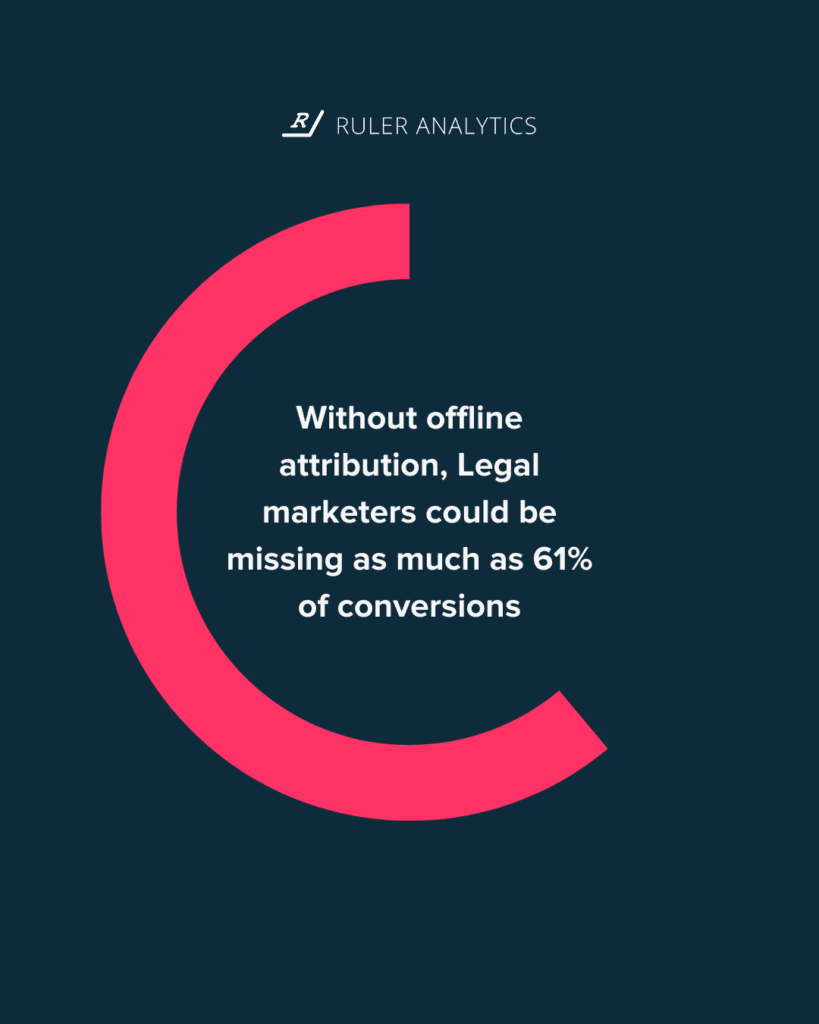
The majority of research is undertaken online. It’s where leads will look for a solution to their issue, and hopefully, find your law firm. From there, they’ll assess if you’re the best fit. They might look at your case studies or check out your online reviews.
But as soon as a website visitor decides to convert, it all goes offline. They’ll convert via a form, or perhaps a live chat session. Most likely, they’ll call you. You need to take details from them and work out if they could be a viable case. There’s no way you can do that via a landing page on your website.
Our research found that 61% of inbound enquiries come from a phone call. The question here is, are you tracking your calls?
Without call tracking and marketing attribution, you’re missing valuable data on where that inbound call found you and how they’ve interacted with your content. This information will help you make smarter decisions in the future when it comes to allocating time and budget to your marketing channels and campaigns.
Both paid search and organic search tend to see more inbound calls as opposed to form submissions. In fact, for both organic and paid, our data highlighted that calls saw a 2% conversion rate on average while form submissions only saw a 1% conversion rate.
Our conversion benchmark report for legal found that 58% of all traffic was being generated by paid search.
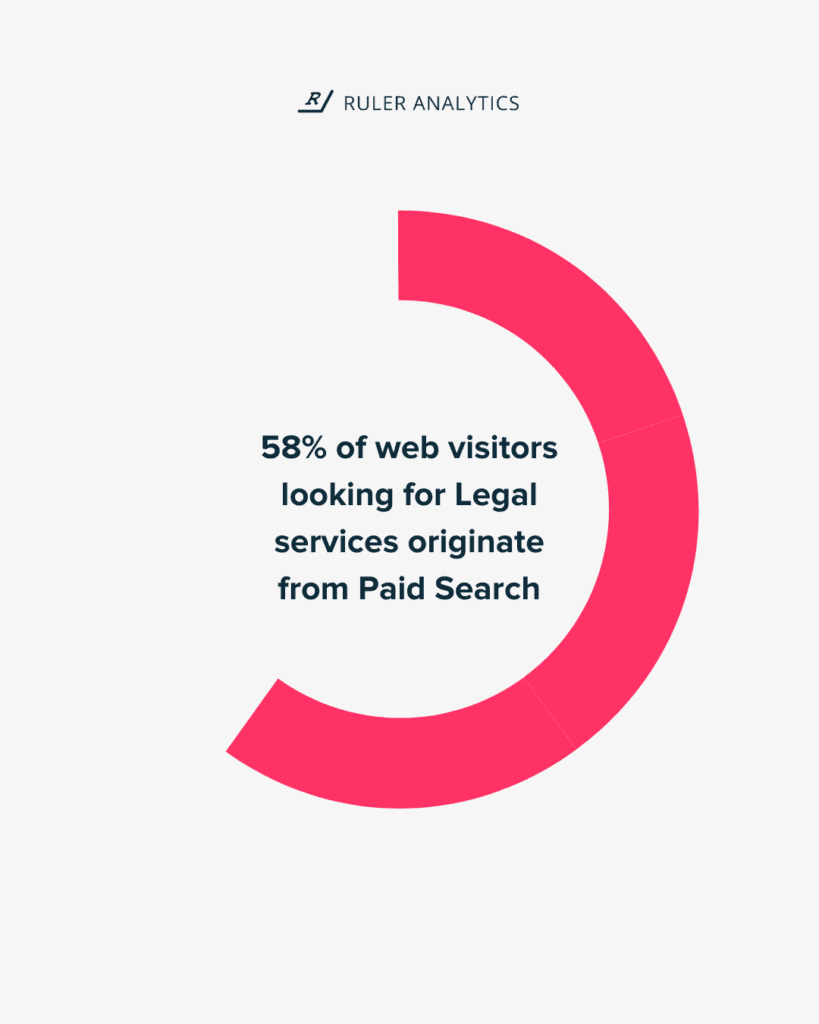
Pay-per-click, or PPC, is a great channel to get your law firm front of mind to highly interested parties. Think about it this way. A potential client is looking for a solution to a problem. Maybe they’re unsure if their employer has treated them legally or fairly. Or perhaps they know they have a legal claim and are looking for the best employee solicitors in their local area.
With a quick bit of keyword research, you can create highly targeted adverts that will get you seen by the people who need you most. No matter what stage of the buyer’s journey they’re in, you can use PPC advertising to drive key actions to help move them closer to becoming a new client.
If you’re looking for advice with paid advertising, check out our guide to law firm PPC.
Now hold on. We know we just said paid search is the best at driving traffic. But we didn’t stop there. We looked at which channels were helping law firms drive new leads too.
And, despite its high impact on traffic levels, paid search came out near the bottom for driving conversions with a 1.8% conversion rate.
But remember. Paid search can still be a lucrative option if done correctly. The main thing you need to remember is that you need proper tracking. With your target audience converting via form, call and maybe even live chat, you need a marketing attribution solution that will help you to track how many new leads you drive through PPC. And even better, how much revenue you eventually close through that channel too!
⚡️ Pro Tip
Not sure how to track the lead generation impact of your PPC campaigns? Ruler Analytics is a marketing attribution solution that can help you do exactly that. Read our blog on PPC conversion tracking to get started.
Our analysis found that for the legal sector, organic search and email marketing were the most fruitful in terms of conversions.
If you’ve got good SEO, then well, you’ve pretty much made it. In the legal sector, organic search had a conversion rate of over 4%. That’s significantly higher than the average conversion rate of 2.6% found across all seven channel types analysed.
Meanwhile, email marketing campaigns came out top when it came to conversions, scoring an impressive 4.5% conversion rate. So, if you’ve got a database of contacts, make sure you use them. Client retention is a huge aspect of legal marketing. Remember, existing leads and customers could all need your services again in the future. Keep them informed with ongoing work, new case studies and updates to try and convert them into cases.
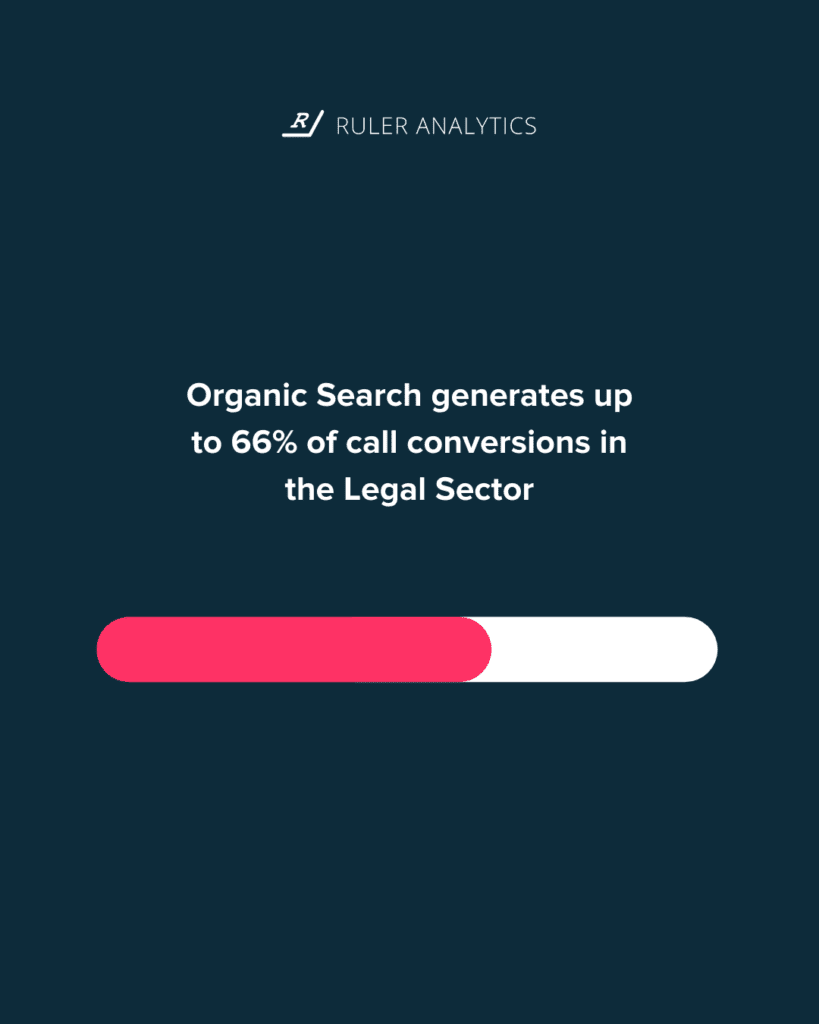
The legal sector is one of the most competitive industries online. Many marketers in legal are investing time and money into getting more traffic to their websites. However, due to the competitive and high-cost nature of the Legal sector, marketers need to start focusing more on the channels that drive the most qualified leads so that they can increase marketing effectiveness and boost company turnover.
So, how do you stack up to the industry average? On average, across all channels analysed, the legal sector tends to see a 2.6% conversion rate for inbound calls and form submissions.
Chances are, you just want to know which marketing channels work best for driving meaningful conversions, right?
We get it. That’s why we’ve shared the average conversion rate for every channel you could possibly need. From organic search and email, to social and paid looking specifically at the legal sector.
Coming in first is email with a conversion rate of 4.5% followed closely by organic search with 4.2% (that’s across Google, Bing and Yahoo).
Next is direct with a conversion rate of 2.9%, and referral at 2.8%.
After that is paid social with a conversion rate of 2.3% followed by paid search at 1.8%. Lastly is organic social with a conversion rate of 1.6%.
But remember, these are industry averages. What might work well for other law firms might not work best for you.
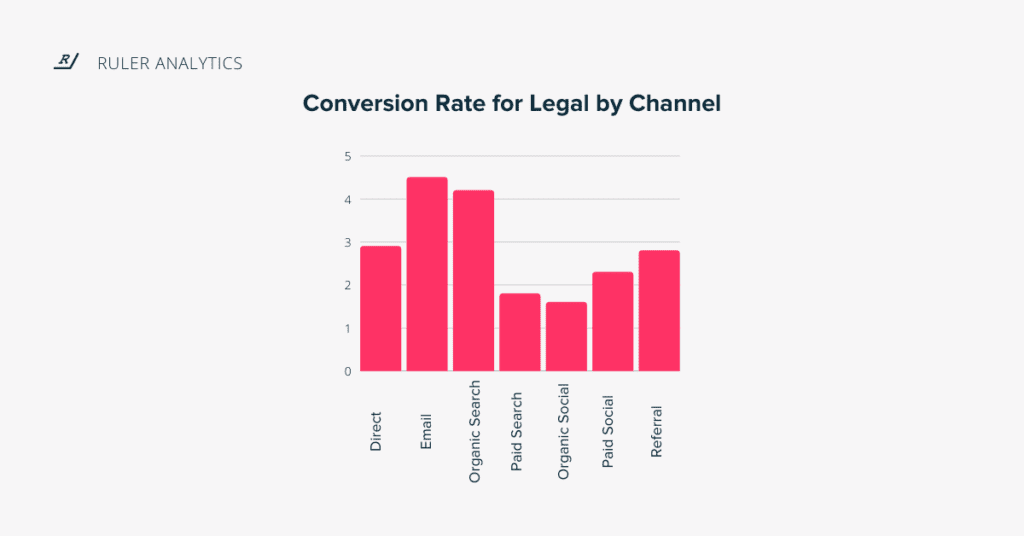
Benchmarking and conversion rates are an essential part of digital marketing reports. They give you great insight into which channels, campaigns and content pieces are helping to drive new leads.
But remember, a new lead does not guarantee revenue, because they may never progress into a case.
The best way to report on your marketing efforts is by tying in revenue. Using revenue allows you to be measurable and actionable. And it’s all possible with Ruler Analytics.
We support law firms across the globe to measure and track leads and their touchpoints.
We feed the lead and marketing data into your CRM so that you can better understand where your leads are coming from. And even better, when your lead closes into a case (whether that takes months or years), Ruler will scrape the revenue from that user in your CRM and fire the data to your marketing apps.
This will allow you to definitively report on your marketing’s success and prove ROI and ROAS. Find out more about how we can support you.
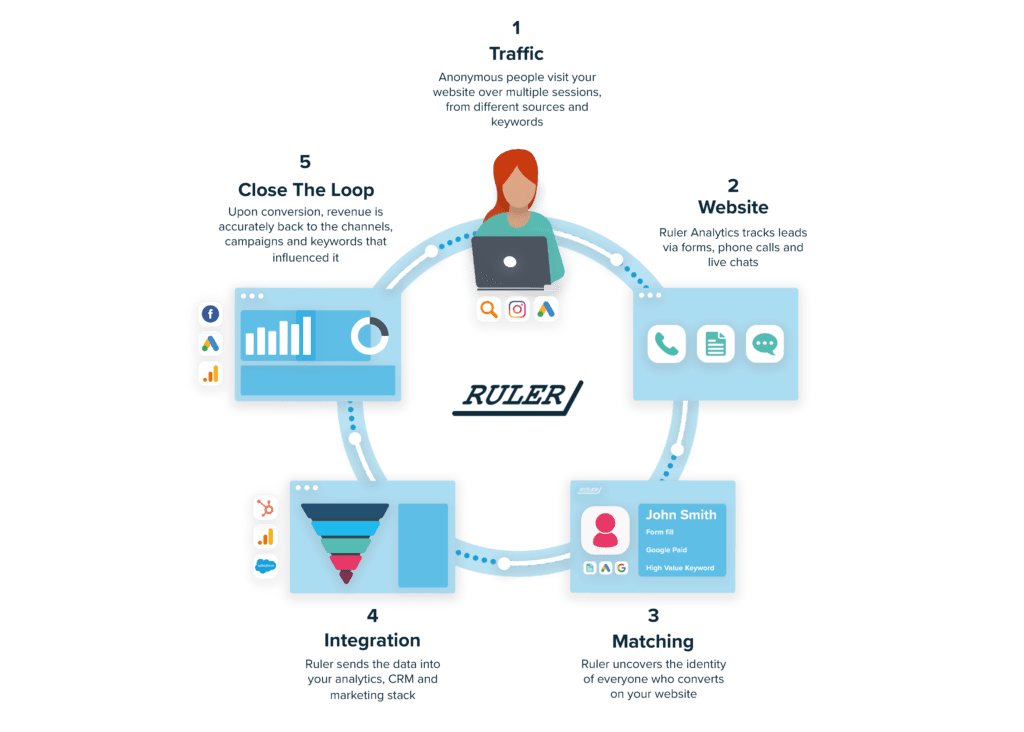
In the meantime, learn more about your competitors by downloading our full Legal Conversion Benchmark Report. You’ll be able to see the full data on how your competitors are using their channels and how their web visitors are engaging and converting.
With this report you’ll be able to answer questions like:
More importantly, benchmarking your activity allows you to understand how well you’re actually performing compared to other businesses in your industry and evaluate where you’re going right—or wrong.